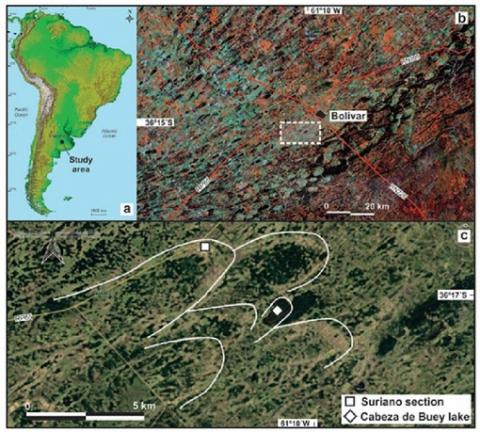Pablo G Messineo, Marcela S Tonello, Silvina Stutz, Alfonsina Tripaldi, Nahuel Scheifler, Nélida Pal, Guillermina Sánchez Vuichard, Diego Navarro
2 018
SAGE Journals, November 28, 2018
The main objective of this work is to generate and integrate interpretations of human occupation strategies and inferences of the environmental-climatic conditions in the central Pampas during the middle and late Holocene. We present a novel archeological–geological–paleoecological analysis in the area of the Cabeza de Buey lake, placed in an aeolian landscape. During the middle Holocene, two events of human occupations were recognized at Laguna Cabeza de Buey 2 archeological site. Both events present a small amount of lithic materials, a low diversity of tools and activities developed with them (principally hard material), and the hunting and primary processing of artiodactyls. These evidences suggest a locus of specific activity associated with an ephemeral human settlement under climate conditions drier than present and the presence of small, brackish, and shallow water bodies. For the late late Holocene, the hunter-gatherer occupation has a higher depositional rate of lithic assemblage, stones with diverse origins, presence of pottery fragments, a great lithic tool diversity, knapping techniques, and activities developed with these tools (processing wood, bone, hide, non-woody plant, and soft material). These evidences reveal an occupation with a higher degree of recurrence represented by a locus of multiple activities associated with a more stable landscape, such as an environment of dunes fixed by grass vegetation, and the establishment of a permanent water body. The different environmental characteristics for the middle and late Holocene in this area promoted that human groups develop two different patterns of mobility, settlement and use of space.
https://journals.sagepub.com/doi/full/10.1177/0959683618810407

